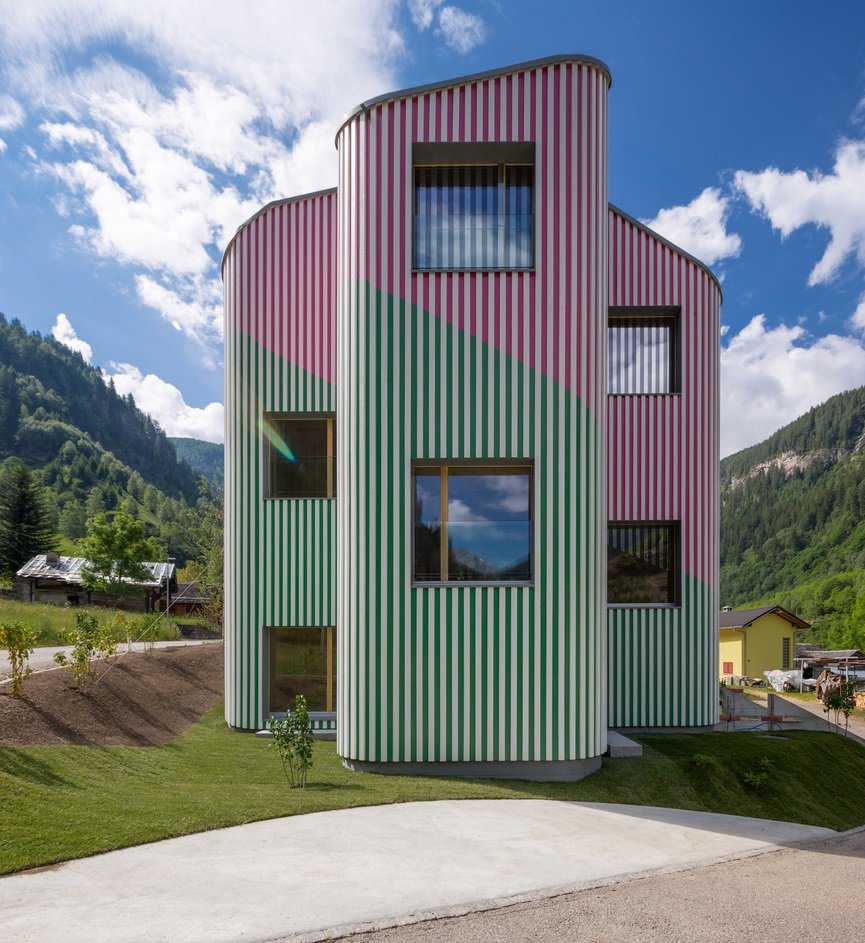#8396. Striped Façade: Two-tone Vertical Cladding in a Mountain Landscape
Before us is a striking example of modern experimental architecture where the façade becomes the main expressive element of the building. The structure features an unusual curvilinear form with smooth, rounded corners that gives it a sculptural character. The most notable feature is the striped façade cladding, consisting of vertical green and white stripes in the lower part and red and white stripes in the upper part, creating a visual contrast and playing with volume perception.
The building's façade demonstrates an interesting zoning technique through color: the green palette symbolically connects the lower part of the building with the surrounding landscape, while the red upper section creates an accent and draws attention. Windows of various sizes are asymmetrically positioned, adding dynamism to the composition. They are framed with wooden frames, adding a warm natural element to the contemporary image.
The building is harmoniously integrated into the picturesque mountain landscape, demonstrating how modern architecture can establish a dialogue with natural surroundings. In home façade design, one could borrow techniques such as using vertical stripes to visually increase the height of the building, playing with contrasting colors for space zoning, and combining geometric shapes with flowing lines to create a unique architectural appearance.
